This tutorial will walk you through how to brew hard kombucha (high-alcohol kombucha), and includes tips for brewing, equipment and flavoring!
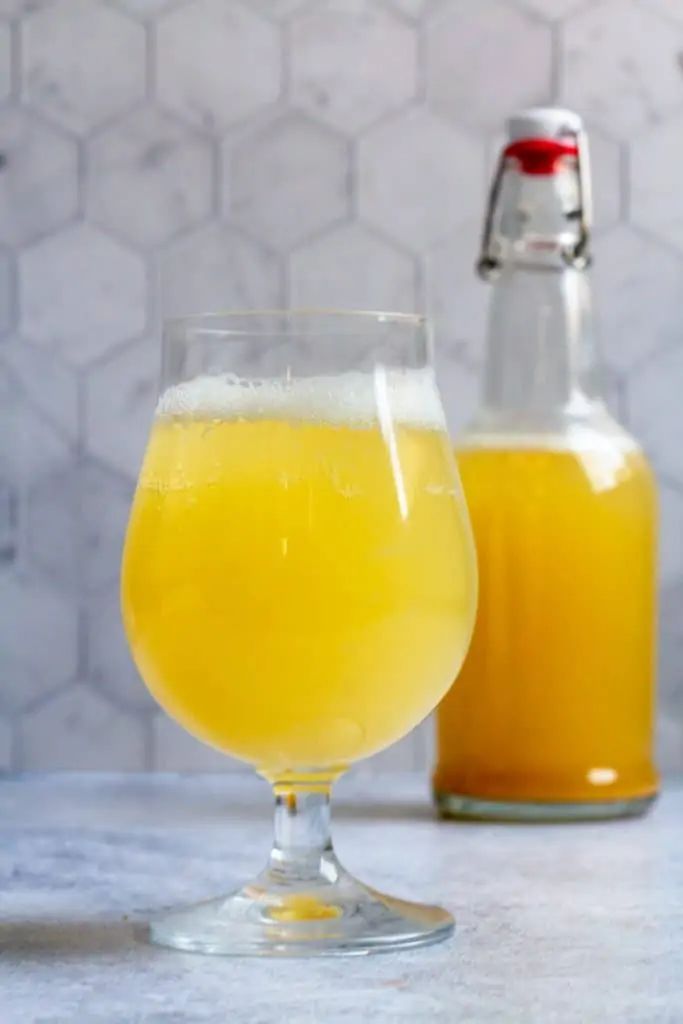
I've been brewing traditional kombucha at home for years.
It all started as an kitchen science experiment and turned into a weekly routine.
Now we drink it almost daily!
Recently, though, I've been seeing something interesting pop up. Hard kombucha.
After trying several different store-bought versions, I started wondering if I could make my own. How hard could it be?
Turns out, it's not hard at all.
I now make my own hard kombucha at home. And you can too.
This tutorial combines my years of home kombucha brewing experience with my husband's beer-brewing experience into an easy, step-by-step tutorial for you to follow along with at home.
Want to try other ferments? Try drinks like milk kefir and water kefir, or try some of our other favorite ferments: fruit vinegar, fermented garlic, Instant Pot yogurt and homemade sauerkraut.
What is Kombucha?
Kombucha is fermented black tea.
Learn how to make traditional kombucha here, or keep reading for a quick overview.
Is Regular Kombucha Already Alcoholic?
Alcohol is a byproduct of yeast consuming sugar, so yes, regular kombucha does contain trace amounts of alcohol.
Traditional kombucha should have an ABV less than 0.5%, low enough that it can be sold as a non-alcoholic beverage.
To turn traditional kombucha into hard kombucha (or a high-alcohol brew), there's an extra step.
What Does Hard Kombucha Taste Like?
To me, it tastes like a cross between regular kombucha and a sour beer.
If you want to try a store-bought version first, my favorite is from Elossa. We buy both Elossa's berry and ginger versions at Trader Joe's.
Sierra Nevada makes a hard kombucha under the brand name Strainge Beast. Strainge Beast is brewed with hops and tastes more like an IPA, but it's worth trying if you're into hoppy brews.
How to Brew Kombucha
To make hard kombucha, you need to start with a batch of, you guessed it, freshly brewed kombucha.
Start with a SCOBY
First things first: you'll need a SCOBY.
SCOBY stands for Symbiotic Culture of Bacteria and Yeast. A kombucha SCOBY is similar to a vinegar mother, and it helps keep the tea safe to drink as it ferments.
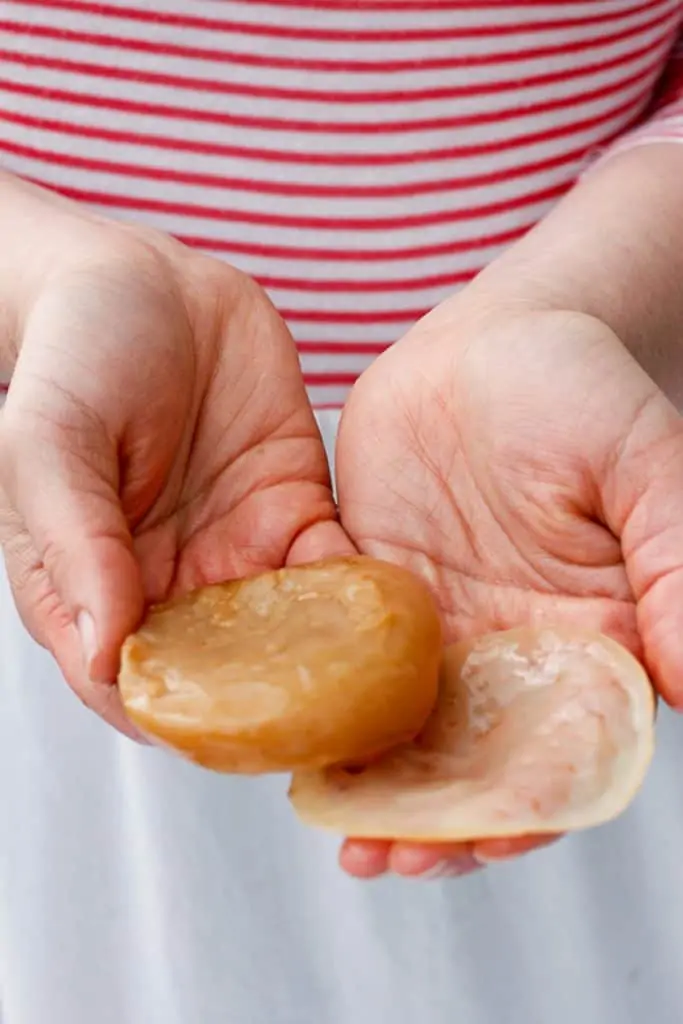
Learn how to grow your own SCOBY or order a SCOBY online.
Brew Sweet Black Tea
Next, brew some sweet tea.
I recommend using organic black tea and regular white sugar.
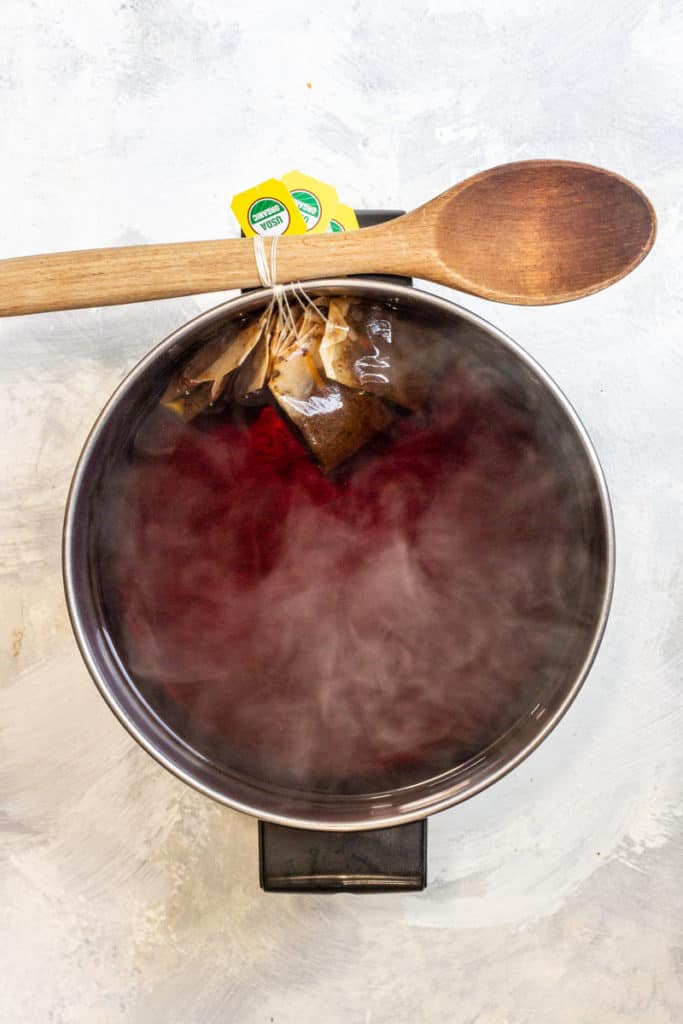
I've been using Anthony's loose leaf black tea. If you prefer tea bags, I like Lipton organic black tea bags.
Let the tea cool to room temperature and pour it into a one-gallon glass jar or two half-gallon jars. Note that if you use two jars, you'll need two SCOBY.
Ferment The Tea
Once the tea cools down, add the SCOBY and a little bit of starter kombucha.
The starter kombucha can be plain, organic unflavored store-bought kombucha, it can be unflavored kombucha from your last brew, or if you order a SCOBY online, the SCOBY should come packed in starter kombucha.
The jar should now contain sweet tea, a SCOBY and starter. Cover the jar loosely using a tea towel or paper towel, and let it ferment for about a week.
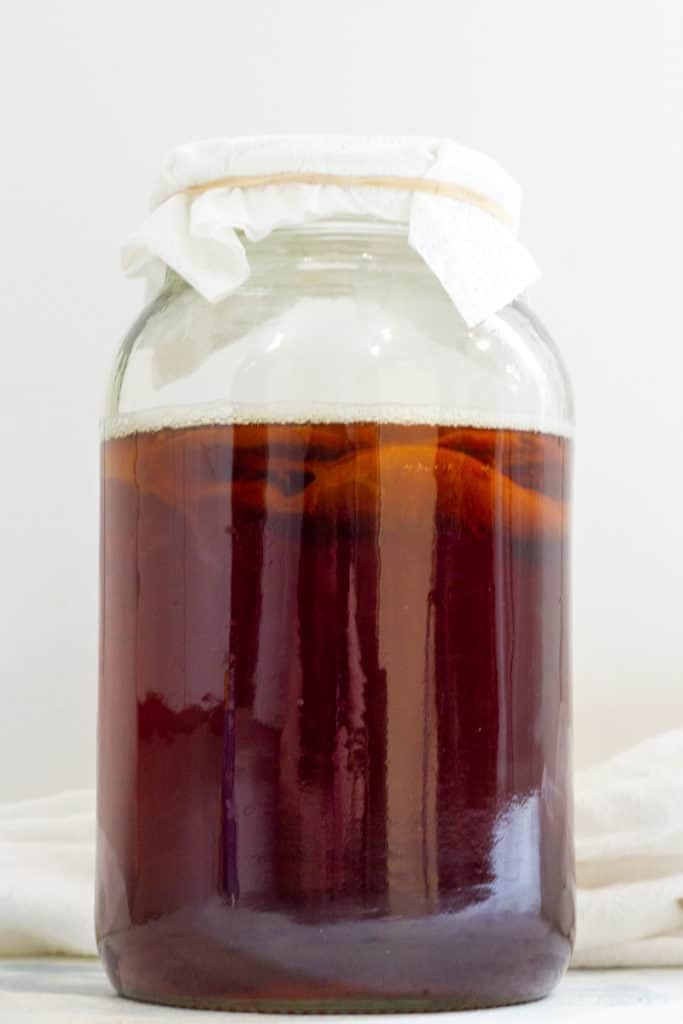
How to Make Hard Kombucha
To turn regular kombucha into an alcoholic version, you'll need to do a second ferment with brewing yeast.
It's a pretty simple process, especially if you're already used to brewing kombucha.
What Supplies Will I Need?
If you're already brewing kombucha, you probably already own most of the supplies needed. Here are a few extra things you'll need (or might want).
Brewing Yeast
You'll need a brewing yeast. I recommend using either a champagne or wine yeast for the best flavor.
I use Red Star champagne yeast.
Airlock Fermenting Lids
While not essential, I recommend using airlock fermenting lids, which will allow gases to escape but stop air from coming into the jar.
Fermenting lids will help make the brewing process easier and more consistent.
I use these Easy Fermenter airlock lids, which are actually intended for use with food, but work perfectly for drinks too. I like them because they fit on my half-gallon jars.
Choose airlock lids that fit the container you're fermenting in. Another option is to use a glass growler and a bubble airlock.
Hydrometer to Check APV
If you'd like to check the ABV (alcohol by volume), you'll need a hydrometer.
Testing the ABV is totally optional, however, and you can skip this step and the equipment if you prefer.
Fermenting with Yeast
Start by activating the champagne yeast.
Bring one cup of filtered water to a boil, mix it with sugar, and then let it cool until it's warm but not hot (about 95°F). It should be comfortable to the touch.
Add the yeast, stir, and then set somewhere warm for about 20 minutes. I like to set mine in a sunny window.
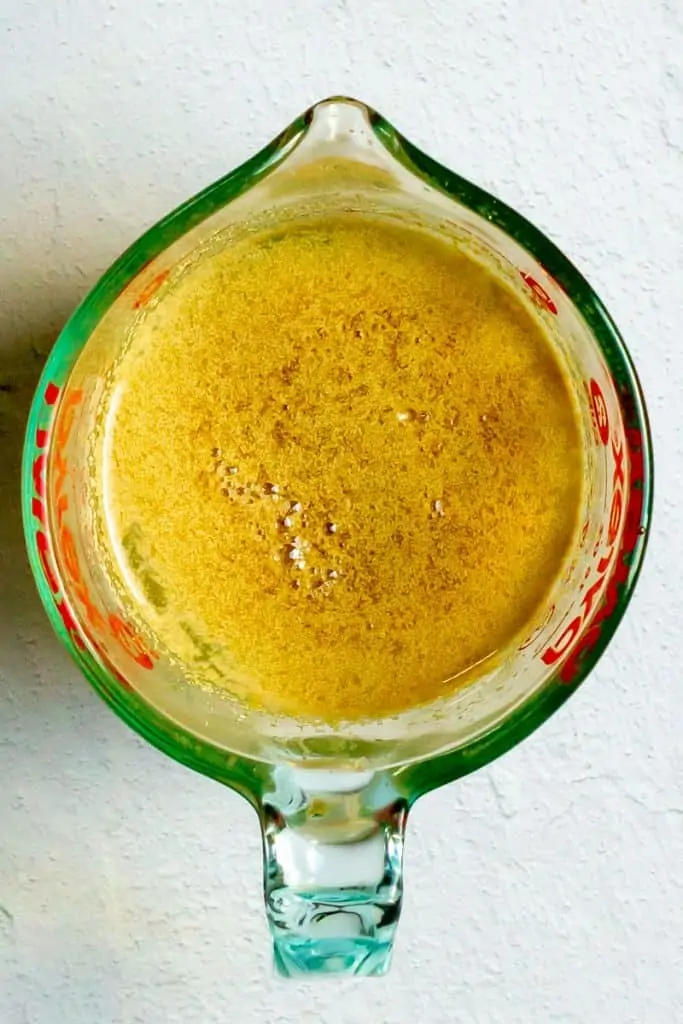
Remove the SCOBY (and a little starter tea) from the tea and set it aside for your next batch.
Add the yeasted sugar water to the tea.
Optionally, test it with a hydrometer to help determine the possible ABV.
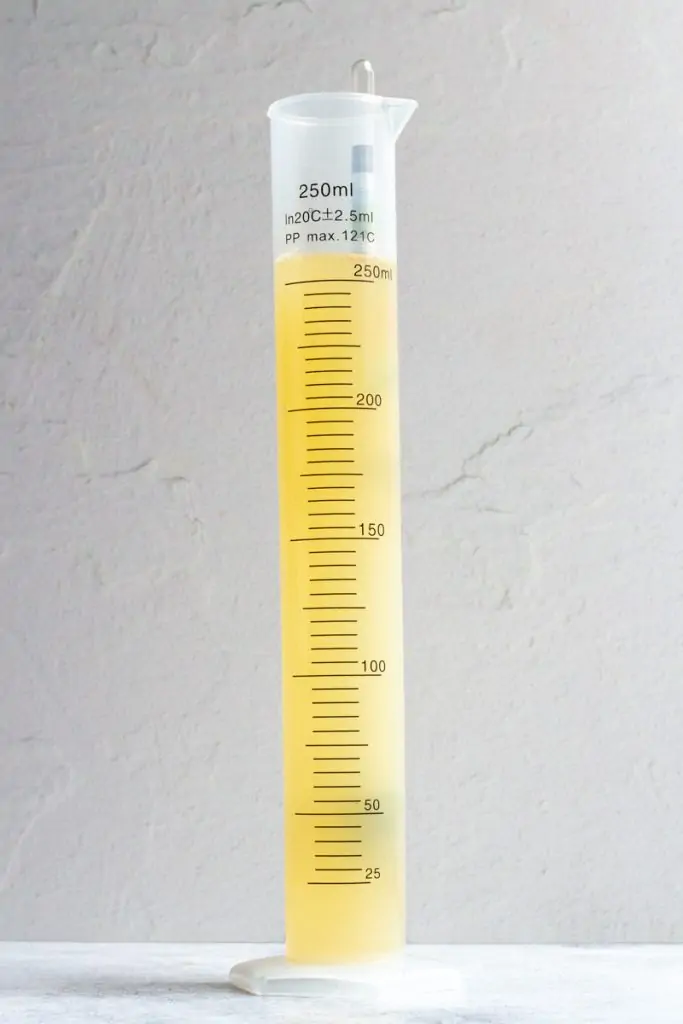
Seal the tea with an airlock fermenting lid and allow it to ferment for seven to ten days.
I recommend testing it both lengths of time and seeing which you prefer.
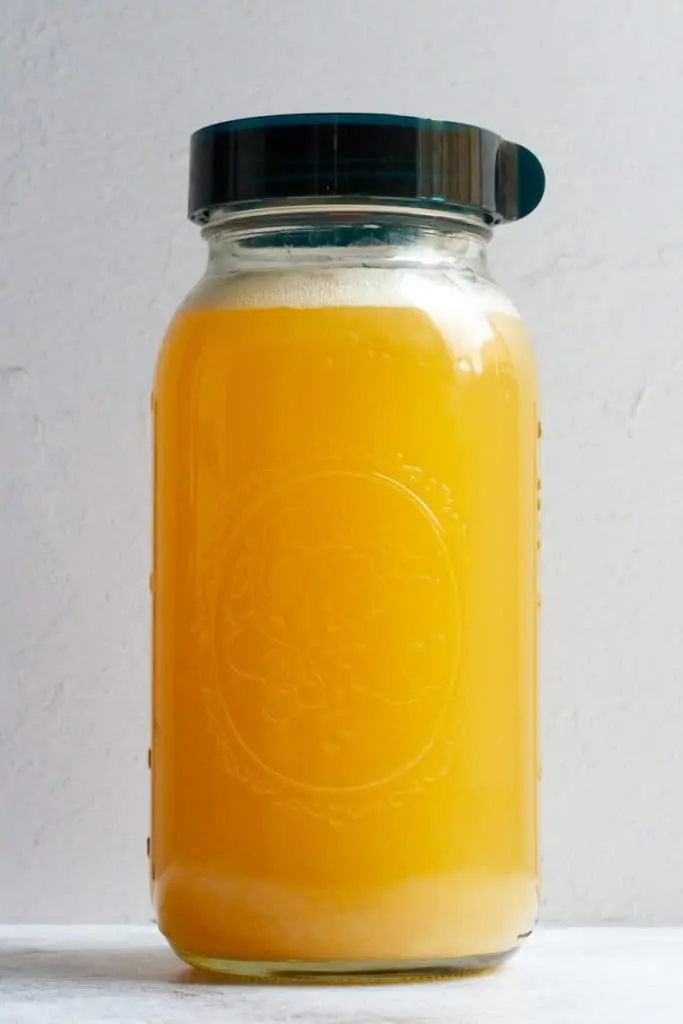
After a week (or two), test again with your hydrometer to determine the ABV. If you're keeping track, that is.
Bottle + Carbonate
After fermenting, use a funnel to pour the hard kombucha into pressure-resistant swing-top bottles or small growlers.
Optionally, add juice to flavor the tea. More on that below.
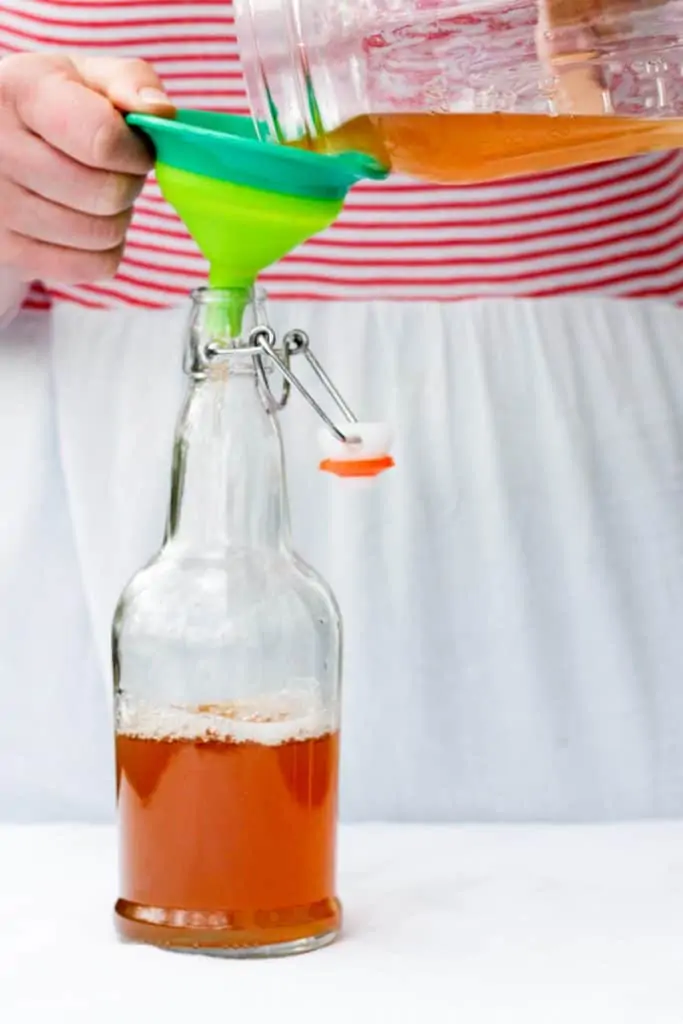
Once or twice a day, open one of the bottles to see if the drink has carbonated.
Make sure to avoid using decorative glass bottles, or any glass container that's not intended for carbonation, because the bottles could burst.
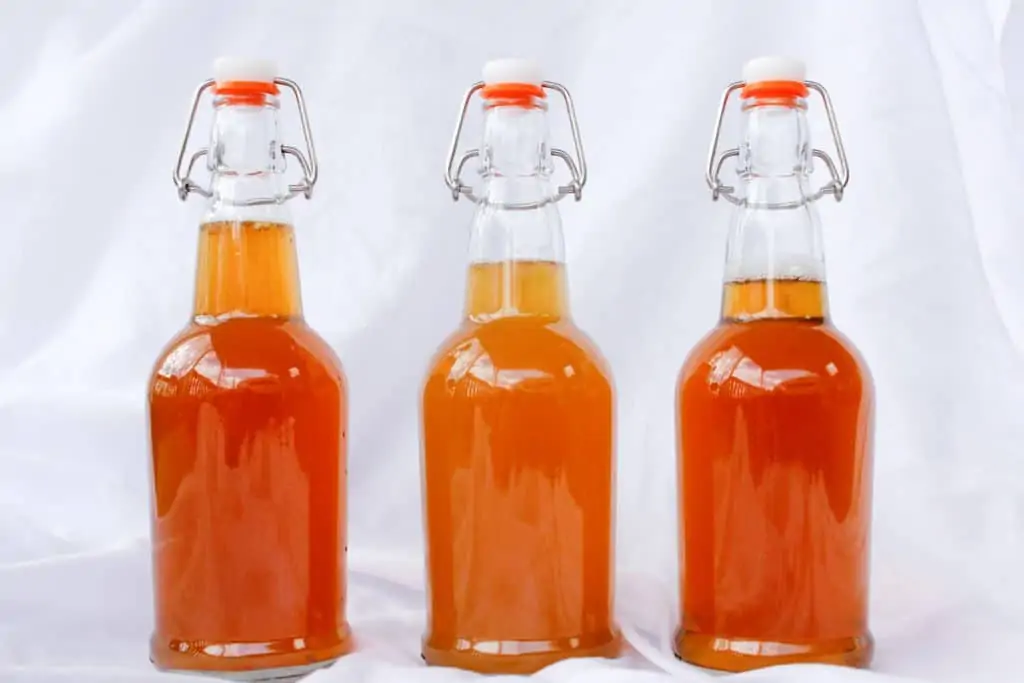
Flavor the Hard Kombucha
The easiest way to add flavor is with juice or simple syrup to the bottle before carbonation.
Use your favorite store-bought juice, or try adding homemade juices like cranberry juice or ginger juice.
You could also add simple syrups, such as basil simple syrup, lavender syrup, ginger syrup, mint syrup, honeysuckle syrup or pumpkin spice syrup.
The options are basically endless, so experiment to find your favorites!
Keep in mind that the yeast will continue to eat the sugar as the kombucha carbonates, so it can be a little difficult to predict how sweet the final product will be.
If the final product isn't sweet enough, you can simply add more juice (or syrup) after carbonation.
Adding Flavors Other Than Juice
To add non-sugary flavors, like herbs, dried hibiscus flowers, citrus peel, or spices, infuse them after brewing with the SCOBY and before adding the yeast.
Simply add the (flowers, spices, whatever!) to the kombucha and let it infuse for about a day, then strain them out and proceed with the brewing yeast.
To brew with hops, you'll need to bring your kombucha to a rolling boil, add the hops, and continue boiling for 30 minutes (at minimum). Cool the kombucha back to room temperature before adding the champagne yeast.
Keep in mind that there are lots of different types of hops. Some are intended to add bitter notes, others add flavor, others are added for aroma, and each type should be added at a different stage of the boil.
For tips on using hops, I like the book Brew Better Beer. It's admittedly a beer brewing book and doesn't address kombucha, but there's some overlap.
Keep in mind that these flavor additions may provide less consistent results than simply adding juice, but go ahead and experiment! It's part of the fun!
Can I Make Plain, Unflavored Hard Kombucha?
You can!
Keep in mind that the added sugars in juice or syrup help with carbonation, so if you're having trouble carbonating your plain kombucha, try adding a sugar simple syrup to the bottles.
What's the final ABV?
The ABV will depend on the temperature in your kitchen and the length of the ferment. The tea will ferment more quickly in warm temperatures and more slowly in cold, so the time of year will affect your brew.
The average ABV when I make this hard kombucha is approximately 4%. I generally ferment the kombucha with the SCOBY for 6 to 7 days and the kombucha with the yeast for about a week and a half.
How Can I Get a Higher ABV?
To increase the final ABV, try increasing either (or both) of the fermentation times. However, I recommend trying it with the times listed in the card first.
With longer ferments, it's possible that the yeast will eat all (or most) of the sugar, making it difficult to carbonate without adding juice or syrup to the bottle.
A Caution for Home Beer Brewers
If you also brew beer, be extra careful about cross-contamination.
Kombucha relies on wild fermentation, whereas your beer brewing attempts to control the yeast completely.
Do not brew kombucha right next to your beer, and do not share any equipment. The wild yeasts can be extra difficult to get rid of and can contaminate your beer.
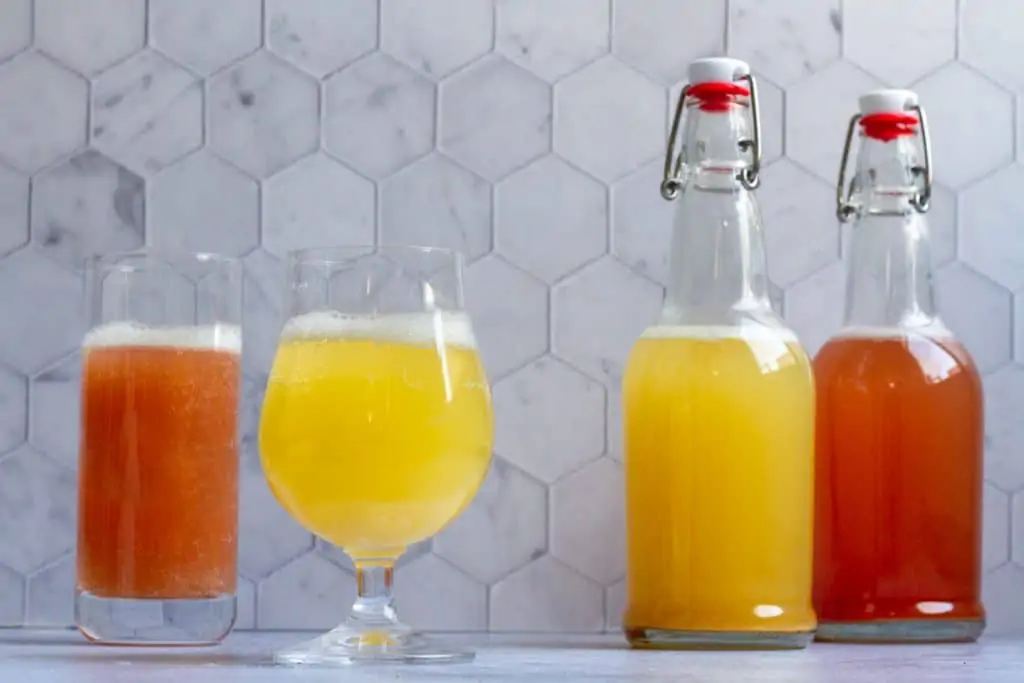
Hard Kombucha
Equipment
- large pot to boil water / steep tea
- 1 gallon glass jar (or 2 half-gallon glass jars)
- paper towels or napkins (avoid using cheesecloth if you have a problem with fruit-flies)
- rubber bands
- funnel
Ingredients
Basic Kombucha Recipe:
- 14 cups water
- 1 cup granulated white sugar Do not substitute raw sugar
- 2 tablespoons organic black tea Or use 8 tea bags
- 2 cups starter kombucha Use plain kombucha from last batch OR store-bought raw kombucha (unflavored, unpasteurized)
- 1 SCOBY per fermentation jar
Hard Kombucha:
- 1 packet champagne yeast
- 1 cup sugar
- 1 cup water
Flavored Kombucha (optional):
- juice or syrup For non-sweet flavor additions (such as herbs or spices), see recipe notes under "flavoring tips"
Instructions
Basic Kombucha Recipe:
- Bring water to a boil. Turn off heat and add tea leaves and sugar. Allow tea to steep until sugar has dissolved and water has cooled to room temperature. Remove the tea bags (or strain out loose tea). Do not proceed to the next step until the tea has completely cooled, or you risk killing the good bacteria in the kombucha.
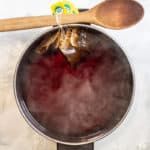
- Pour into the glass jar (or divide into two glass jars). Add store-bought kombucha (or starter kombucha from a previous batch) and the SCOBY.Cover the jar(s) with a napkin or paper towel, and secure with the rubber band.Tip: If using multiple jars, make sure to have 1 SCOBY per jar.Set the jar(s) out of direct sunlight (sunlight can keep the tea from fermenting), at room temperature (around 70ºF), and avoid bumping or jostling the jar(s).Allow tea to ferment for 7 - 10 days. The longer tea ferments, the stronger the vinegar flavor will be, but fermentation is also affected by the temperature where you live. Smell the tea after 7 days, and let it ferment longer if desired.Next, pour 2 cups of the fermented tea into a container and set aside. This is your starter for the next batch. Place your SCOBY inside this 'starter' kombucha until your next batch of tea is ready.
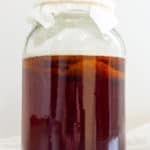
Hard Kombucha:
- Bring 1 cup water to a boil. In a small bowl (or measuring cup), add the water and 1 cup sugar. Stir to dissolve the sugar. Set aside and cool until it's approximately 95°F. (Warmer than room temperature, but not too hot to touch.)Stir in the champagne yeast. Set in a warm spot for at least 20 minutes. The yeast should begin to bubble slightly.

- Add the yeast to the kombucha. Optionally, use a hydrometer to check the potential ABV. (See recipe notes.)
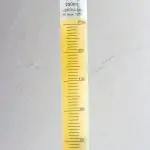
- Add an airlock lid and ferment for 7 to 10 days, or until you're happy with the flavor. (The longer it ferments, the less sweet it will be.)
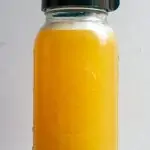
- Optionally, use a hydrometer to find the actual ABV. If you're measuring ABV, make sure to check the gravity with a hydrometer before adding any additional sweeteners, such as juice, because the sugar in the juice will throw off the measurement.

Bottling + Flavoring Kombucha:
- Use a funnel to pour the kombucha into pressure-resistant bottles. Optionally, add juice or simple syrup to each bottle to add flavoring.Test the bottles once or twice a day until carbonation forms. Refrigerate immediately to slow fermentation.
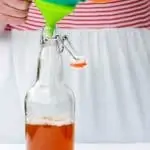
Notes
- Keep it clean! Always wash your hands before handling the SCOBY, and use clean jars and equipment. Do not, however use antibacterial soap to clean your supplies.
- Label everything! A lot of this process is trial and error, so it’s helpful to know exactly what you did.
- Have fun! Ultimately, this is a learning process from start to finish. Experiment with new flavors, gush about your kombucha fermentation station to your friends, and share your baby SCOBY with them!
- If your airlock lids don't fit the container you used for your 1st ferment (with the SCOBY), you should transfer the kombucha to a container that works with airlock lids for the 2nd ferment (with the champagne yeast). Unless you're skipping the airlock lids.
- Some hydrometer directions say to check the gravity before adding the yeast. Since we're using a full cup of sugar along with the yeast, I opt to check the gravity after adding the yeast.
- If you check the gravity after adding the yeast (like I do), make sure to use the hydrometer immediately (before the yeast eats much of the sugar).
- Follow the hydrometer directions for checking the ABV.
- The typical ABV for my hard kombucha batches has been around 4%, but the actual ABV will differ depending on the room temperature, how long the kombucha ferments (at each stage), and the brewing yeast.
- Use pressure resistant bottles, preferably ones meant for use in brewing. Do not use decorative glass bottles to carbonate your kombucha. They are not meant to deal with pressure and may burst.
- If your kombucha isn't carbonating, first make sure your bottles are tightly sealed.
- If your kombucha isn't carbonating (even with tightly sealed lids), it may not have enough sugar remaining to carbonate. Try back-sweetening it by adding fruit juice or a sugar-based simple syrup (1 cup water to 1 cup sugar). The sugar in the juice or syrup should assist in carbonation.
- Non-sweet flavor additions (such as whole spices or herbs) can be added after the initial fermentation (with the SCOBY) and before fermentation with yeast. Strain out any additions before proceeding to the yeast ferment.
- Remove the SCOBY before adding champagne yeast. The SCOBY doesn’t like it when the environment changes.
- Going out of town? Simply leave your SCOBY in a batch of kombucha. That batch might be too vinegary to use, but the SCOBY will be fine, and you can start over after your trip. If it’s for a longer time-period, either have someone babysit your kombucha, or start over when you get back in town.
- This is normal: A new, transparent SCOBY disk appearing on the top of the kombucha batch; stringy pieces of SCOBY floating in the drink (like with a vinegar mother); the SCOBY floating on top, on the side, on the bottom-- It doesn't matter where it is, it's working.
- This is not normal: The SCOBY is black. The tea has mold or smells rotten. Throw away your SCOBY and tea and start over.


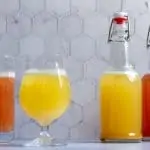
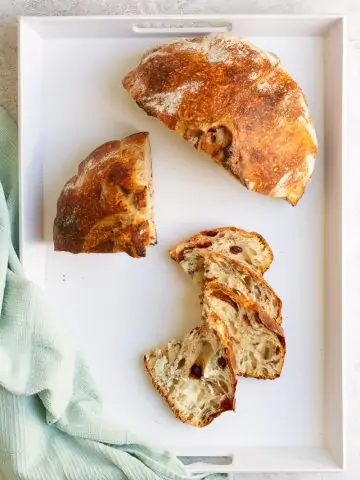
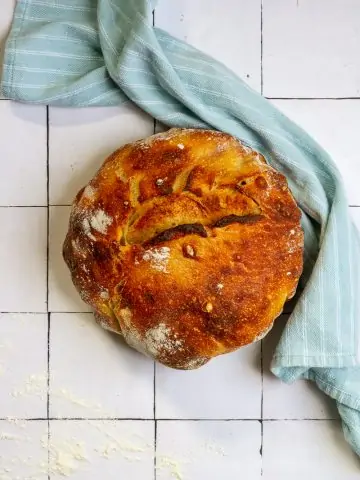
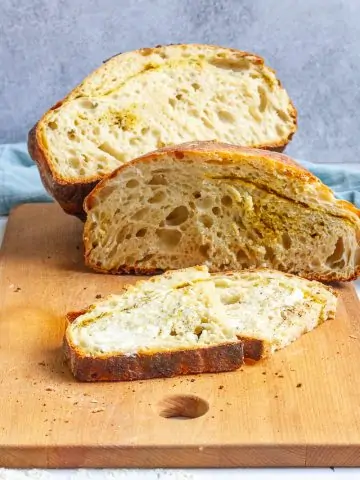
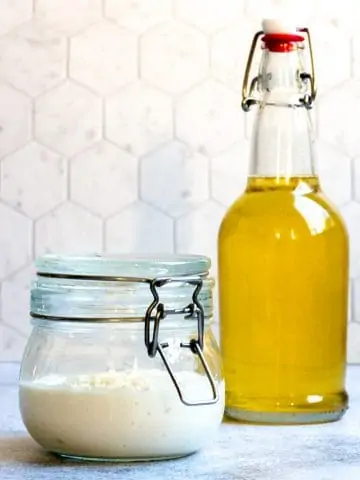
Kirk von kraut
I have been playing with turbo yeast. What is your opinion on turbo yeast? It produces some wicked fast alcohol.
Sarah Trenalone
Hi Kirk! From what I understand, turbo yeast is great for fast clean ferments, but not the best for flavor development. But I haven't tried using it with kombucha, and I think it might be fun to experiment with! If you try this with turbo yeast let us know how it turns out!
Rebecca
What is the ratio of yeast, water and sugar for activating the yeast to get hard kombucha?
Alisha Trenalone
Hi Rebecca, we recommend using 1 packet of champagne yeast, 1 cup of water, and 1 cup of sugar. (Check the "hard kombucha" section of the ingredients list and step 1 under "hard kombucha" in the instructions.) Hope that helps!
-Alisha at Champagne Tastes
Derek
The ratio of 1 cup sugar/ 1 cup wate /yeast packet. Do you add the entire mix to one 1/2 gallon jar? Or split it up?
Alisha Trenalone
This is the amount that would go in a gallon jar of kombucha, so yes, if you're using half-gallon jars, you should split it between them!
Hope it goes well!
-Alisha at Champagne Tastes
Deborah
I tried this with wine champagne yeast from Amazon. I left it at least two weeks but it was pretty cool here. It grew a new SCOBY like another reviewer! it was in two separate containers split from the same kombucha (I am a long time kombucha maker) the yeast was split as well and both sealed. both fermented quite differently in terms of taste! Thing is even after this time and a day with ginger syrup the alcohol content was not detectable to me! 🙁
Franchesca
Ok so it was my first time attempting hard kombucha ever. I've made kombucha for years and always wanted to try it. I followed this recipe and the hard booch tasted and smelled SO GOOD! So good i was quick to brew more, but then on the second and third batch I brewed there was a FUNKY smell after the week of champagne yeast fermentation. The kombucha I started with was delicious. Any ideas what happened? I used the same sugar, stored it the same way, maintained same temperature. It's not very appetizing but I'm wondering should I proceed on to bottling and adding juice... can that smell be overcome/ fixed, or is it destined for the drain? And any ideas what i should do or not do next time to avoid this? Thank you!!!
Alisha Trenalone
Hi, so glad it worked for you the first time! 🙂 Since it worked once but didn't the second and third time, here are my best guesses:
1) Make sure your containers are all clean.
2) If you're fermenting or brewing anything else at the same time, you might try moving them to different areas.
3) If the ingredients haven't changed, if the containers are clean and if there's not another fermentation project happening right next to it, the most likely problem is that it over-fermented. If the temperature in your kitchen changed (like if spring came and it got warmer), the kombucha will ferment more quickly than if it was colder. I'd try checking on the hard kombucha earlier in the ferment process. The champagne yeast makes this ferment a lot more quickly than regular kombucha, with a little less room for error.
Also, you could try salvaging the current batch, but if it already tastes funky I might just try adding juice to a small amount and seeing if you like the flavor before trying to bottle the whole batch.
I hope that helps!
-Alisha at Champagne Tastes
Jodi
I'm just getting started on my first ever batch of hard kombucha after making regular kombucha for years, and I have a quick question. I brew my 'booch in a 2-gallon glass dispenser and plan on continuing the 2nd fermentation with the champagne yeast in the same container without the airlock. (I'll place the lid on loosely to let CO2 buildup escape when needed.) If I'm making a double batch, do I double the water+sugar+yeast amounts for the 2nd fermentation? Thank you!
Alisha Trenalone
We haven't tried making a 2-gallon batch yet, but yes, doubling the water/sugar/yeast is probably your best bet! Let us know how it turns out!
-Alisha at Champagne Tastes
John Bilic
Dear Rebecca: I have a question about carbonation, how much sugar do I use for a 1 liter bottle? Sometimes 1 tsp is too much and other times it’s perfect. Also I use a beer yeast in my second fermentation and I get an odd looking scoby (it looks like a white hockey puck with none of the brown tentacles). Is the beer yeast replacing the kombucha yeast in this scoby? I asked at my local home brew shop, but they don’t know about kombucha.
Alisha Trenalone
Hello, we've only tested this with champagne or wine yeast on the second fermentation (and the kombucha scoby gets taken out after the first fermentation anyway), so not sure what's going on with your yeast. And regarding adding extra sugar for carbonation, we do this in the form of fruit juice, or simple syrup, and there's no exact number for how much to add. Carbonation time (and personal flavor preferences) vary so much that each batch has a little bit of trial-and-error potential!
-Alisha at Champagne Tastes
Tumusiime Ronald
The information is very good but I have a question;
Can wine yeast give me results as good as using champagne yeast?
Alisha Trenalone
Yes, either should be fine!
-Alisha at Champagne Tastes
rick lunt
how much 'juice' do you start with. Clearly related to intensity of flavor. I'm looking for a starting point, versus ruining a batch with too much.
Thanks in advance
Alisha Trenalone
Hello! With adding juice, it really is all a matter of taste! If you make a batch and decide it’s not sweet enough, you could always pour the finished kombucha in a glass with extra juice. Maybe start with about a cup and go from there?
-Alisha at Champagne Tastes
Gina
After a million searches and youtube videos, this is the best info for beginning and what I came up with the long way. I would add pictures of the airlock and vessel ideas and probably a few pics of examples made linking to recipes. I'm at the airlock stage and just love watching the little bubbles.
Gina
I forgot the rating. Definitely a 5 for the post!!!
Alisha Trenalone
Glad it's working out for you!! Thanks for letting us know!
-Alisha at Champagne Tastes
Kat L
I am in the process of second ferment with champagne yeast. Is it normal for a new scoby to grow during this ferment? I assume it's normal, but can't seem to find any reassurances searching online. Thanks!
Alisha Trenalone
Yes, that's normal! Thanks for getting in touch, hope your batch turns out deliciously ☺
-Alisha at Champagne Tastes
Deborah
so I am a kombucha pro but trying this a second time and it grew a scoby and I don't have a monitor but myself I didn't feel it was hard if only a miniscule amount. I don't belive it should grow a scoby but it'd the second time it's done that. maybe the scoby ate the sugar so the yeast could produce forbidden substances?
Patricia
Thank you for such a detailed and clear recipe! So excited to try 🙂
Alisha Trenalone
Hope it goes well for you!
-Alisha at Champagne Tastes